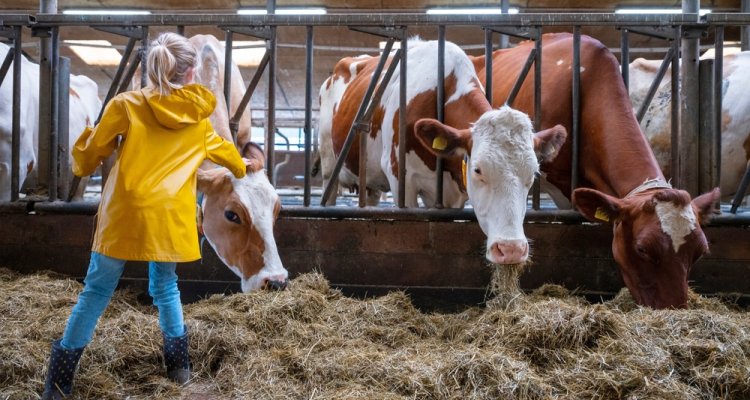
News
Nature-inclusive farming requires different approach to one health
“Nature-inclusive farming increases the risk of potentially zoonotic diseases,” warns researcher Ad Koets of Wageningen Bioveterinary Research (WBVR, part of Wageningen University & Research). Koets was keynote speaker at the recently held European Buiatrics Congress in Berlin. In his presentation, he addressed the challenges society faces when choosing to change the relationship between animals, humans and nature.
Globally, but certainly in Europe, more attention is being paid to nature-inclusive farming. From a European perspective, nature-inclusive farming is in line with the policy goals in the Green Deal. Dutch policymakers see this type of farming as one of the solutions to the nitrogen problem, among others. Moreover, nature-inclusive farming is in line with the trend of consumers demanding more attention to animal welfare. Senior researcher Ad Koets of WBVR points out that the current farming system has been in place for a long time. “The way we farm now has a history of 50, 60 years. Farmers and their animals have grown up in this system and adapted to it.” Koets believes the system cannot therefore be changed overnight. “Setting up a new farming or animal husbandry system takes time. The cow of today, may not be suitable for the farming system of tomorrow.”
Pathogen-inclusive
The WBVR researcher's main concern is the impact on animal welfare and health in a pathogen-inclusive farming system. “What many do not realise, is that nature-inclusive means it is also pathogen-inclusive,” he says. If an agricultural system is to be more part of the natural environment, then the use of substances such as fertilisers and medication will be reduced. Koets expects diseases that are currently absent or rare in modern livestock farming to return in nature-inclusive agriculture. He is thinking, among others, of bovine tuberculosis (TB), a disease that no longer occurs in western dairy farming but is present among wild animals. “When contact between wild and domestic animals becomes easier again, we will not keep out a disease like TB,” the researcher warns.
Zoonotic
Many of the diseases that can potentially be reintroduced into domesticated animals via wild animals are zoonotic, Koets stresses. “This means that not only our kept animals but also we humans are at risk. It took us 70 years to eradicate bovine TB in the Netherlands and now it looks like we are going to open the door to that and other diseases ourselves by focusing on nature-inclusive farming.” The researcher points out that precisely because there has been a lot of focus on animal health in the Netherlands, diseases have been eradicated. “But many of the pathogens are still in Europe. It would take little for a reintroduction of, for example, bovine TB in our country.”
Resilience
Koets is certainly not against changing the current husbandry system in the Netherlands, quite the contrary. “The fact that we are now free of certain diseases does not mean that the situation is stable. On the contrary, in many cases we are very vulnerable. Our rearing system is not robust. To change that, we need to make animals more resilient. Make more use of their own defence system by giving young animals the opportunity to build up and train their defence system properly in a suitable form of husbandry. However, this approach also leads us to look differently at disease in young animals in a herd. Certain symptoms that we now consider undesirable are needed to train and build a robust immune system.” Ultimately, this process will ensure a more robust herd, Koets argues. “But do we as a society, consumer, animal farmer and veterinarian accept this development as a consequence of a changing animal husbandry system?”
Monitoring
According to Koets, it is still too early to fully assess the consequences of a switch to nature-inclusive farming. Regardless, he argues that in the context of animal health and welfare, we should pay a lot of attention to monitoring and intensify the programmes for this, preferably internationally as well as in the wild population. “Through monitoring, we can at least keep track of which pathogens are present in the natural environment, so that we can take appropriate measures as early as possible,” he concludes.